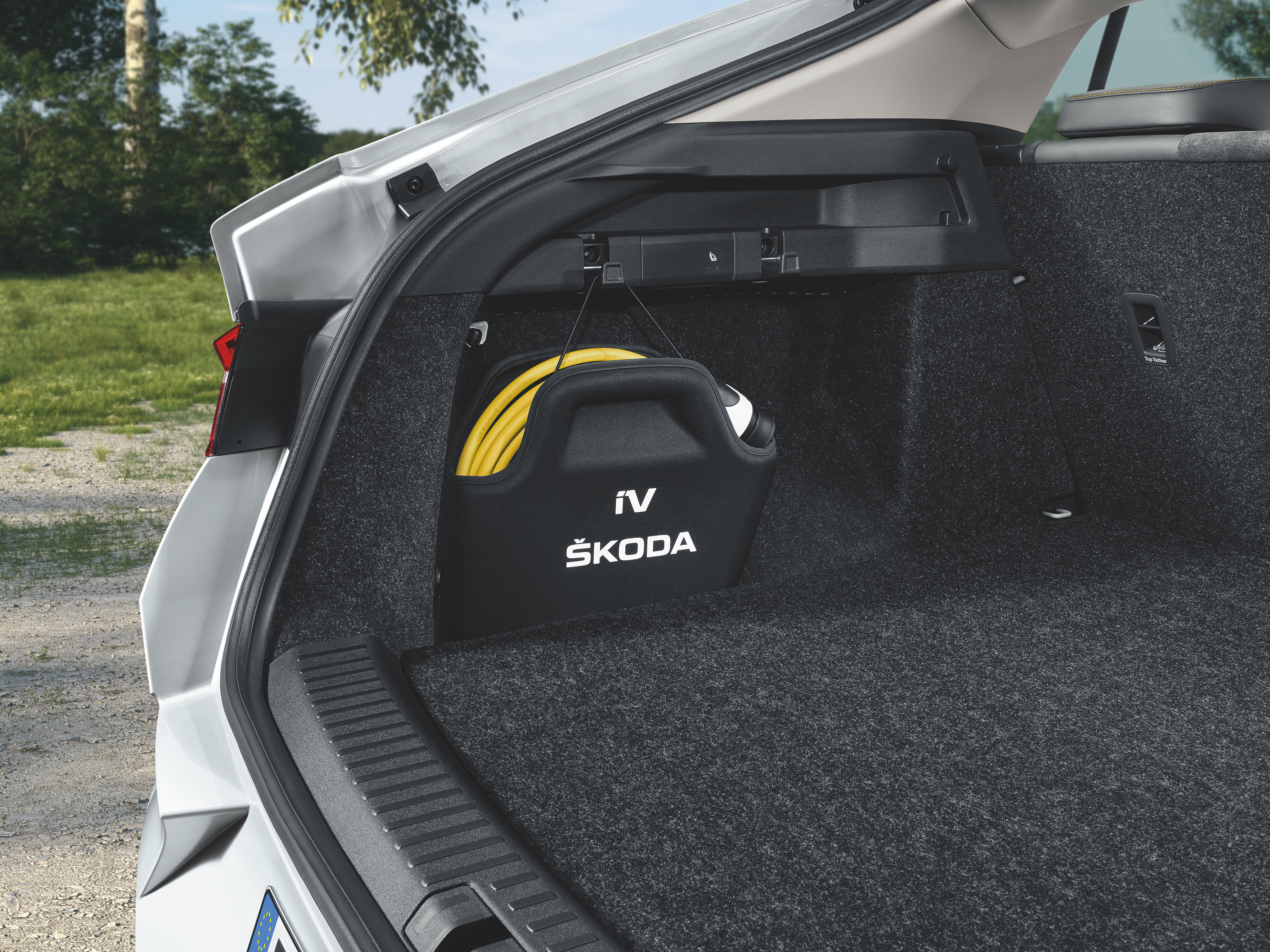The issue of charging electric cars could either be very complicated, or simplified down to saying that you just need to plug the supplied cable into a socket and that’s it. At home you would use the standard cable supplied with the car, or the plug of an installed wallbox, while on the road it would usually be a cable that’s an integrated part of a charging station.
 ŠKODA offers wallboxes for convenient home charging, including the option of installation.
ŠKODA offers wallboxes for convenient home charging, including the option of installation.
But if we’re talking about charging per se, the underlying science, then there are two options: alternating current (AC) charging and direct current (DC) charging. AC charging is charging the car from the regular mains; DC charging from a charging station with an integrated inverter. The inverter is in a way the main reason why these charging methods differ in the maximum power they normally provide.
It’s like this: the battery stores energy in the form of DC voltage, and the car needs to have its own on-board inverter that will allow the battery to be recharged with DC current even from the AC mains. However, the inverter requires particular parameters for particular outputs, if only because of the thermal load its operation involves. And if a car were supposed to have an AC to DC converter on board for high power outputs, as DC chargers normally do, it would be too big and heavy.

So the standard inverter in cars is compact and can handle outputs in the order of units to the lower tens of kW, which are the outputs that AC charging at home from a wall socket, wallbox, or on the road from a public charging station will provide. The charging is managed by the car itself and everything goes through its own inverter. The ŠKODA ENYAQ iV can handle up to 11 kW of power in this way, for example.












































